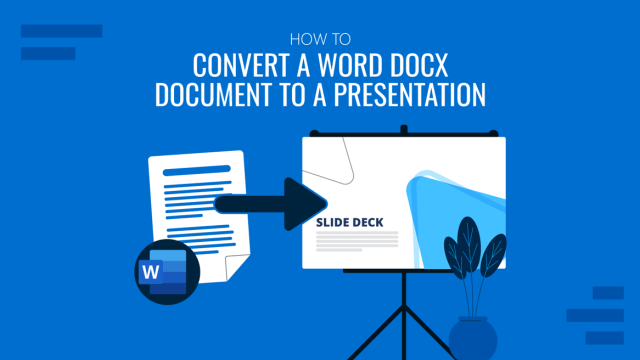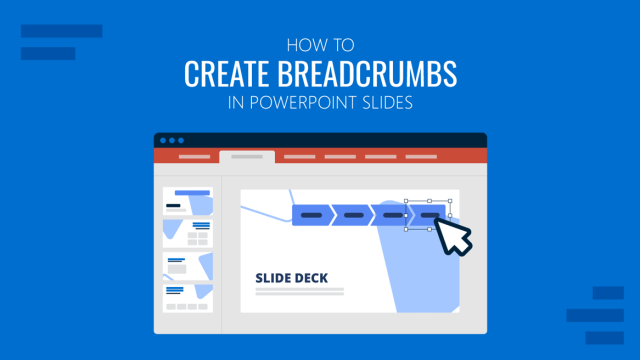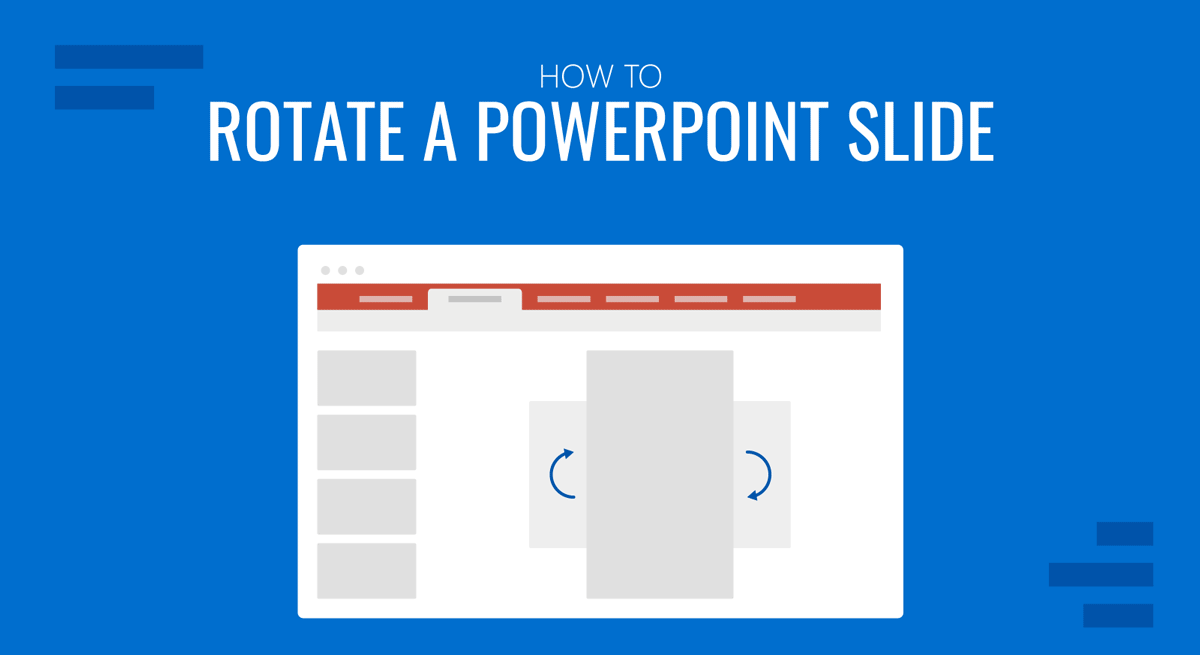
You might need to rotate a PowerPoint slide or an object to adjust to your requirements or to change an element in PowerPoint templates you might need to edit. Individual slide objects and the whole slide can be rotated using the Rotate Objects option.
How to Rotate PowerPoint Slide
Before rotating a PowerPoint slide, ensure the orientation is according to your liking via Design -> Customize -> Slide Size. You can switch between standard or widescreen orientation or customize it via the Custom Slide Size option.
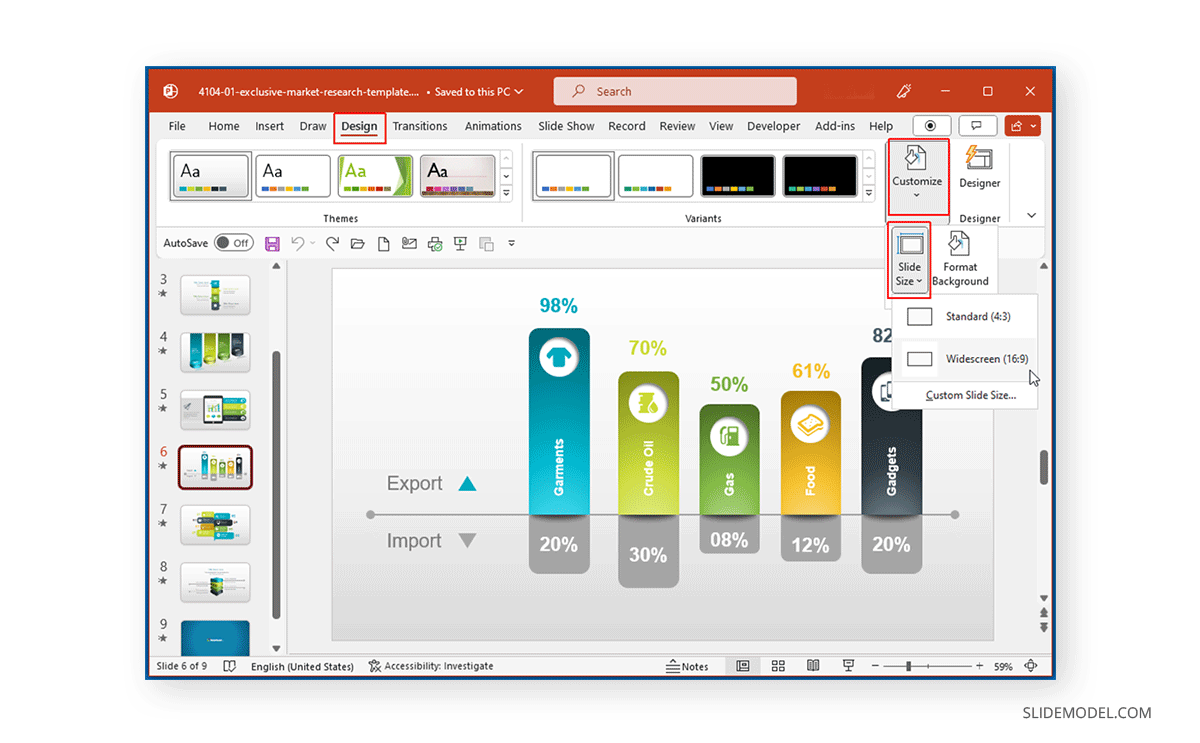
Select the whole slide by selecting CTRL+A (Windows ) or Command+A (Mac) or select objects to rotate. If you don’t want to select all objects, use SHIFT+Left-Click to select the parts of the slide you want to rotate. Once done, go to the Format tab, Rotate Objects menu, and select the Rotate (Right or Left) option.
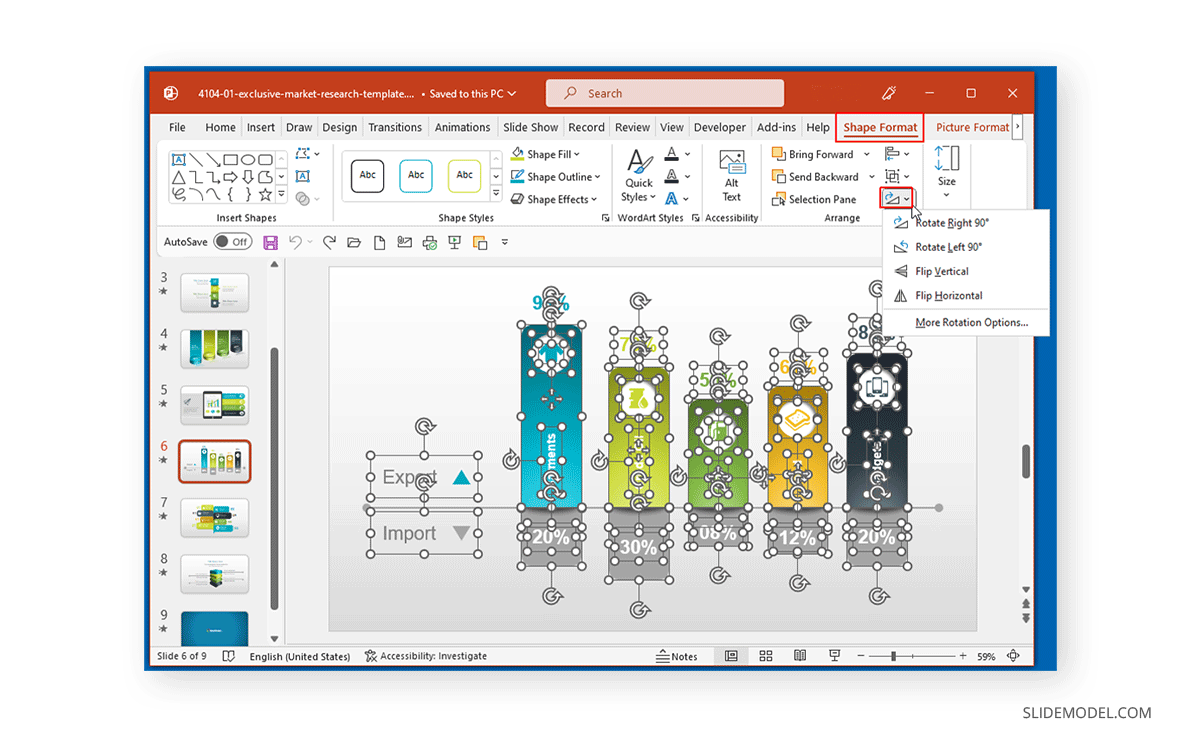
To further adjust the rotation, you can select a custom rotation orientation via the Format tab by going to the Rotate Objects menu, followed by More Rotation Options. If you have been wondering how to flip PowerPoint slides, the option is also in the same menu.
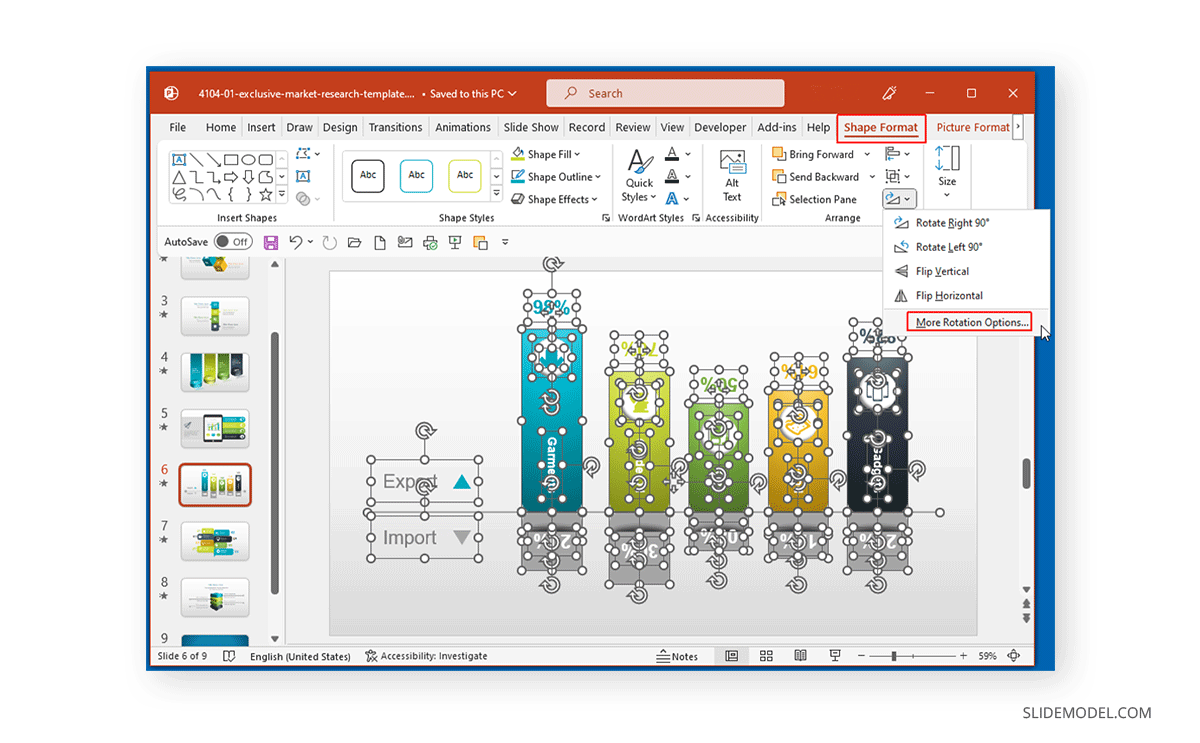
This will open a sidebar with detailed adjustment options to select the rotation more specifically instead of a limitation of a 90-degree rotation.
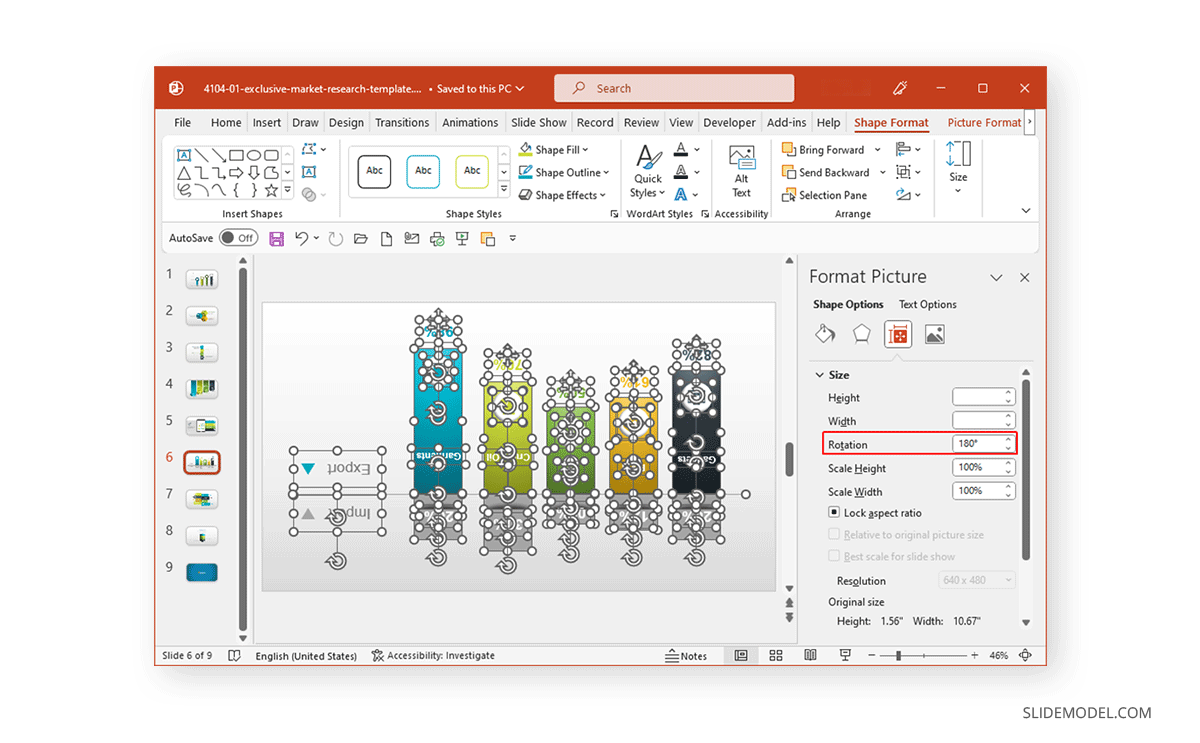
In the example below, we rotate a bar chart by selecting the whole slide (all slide objects) and rotating it 180 degrees, which is also called “mirroring” the slide.
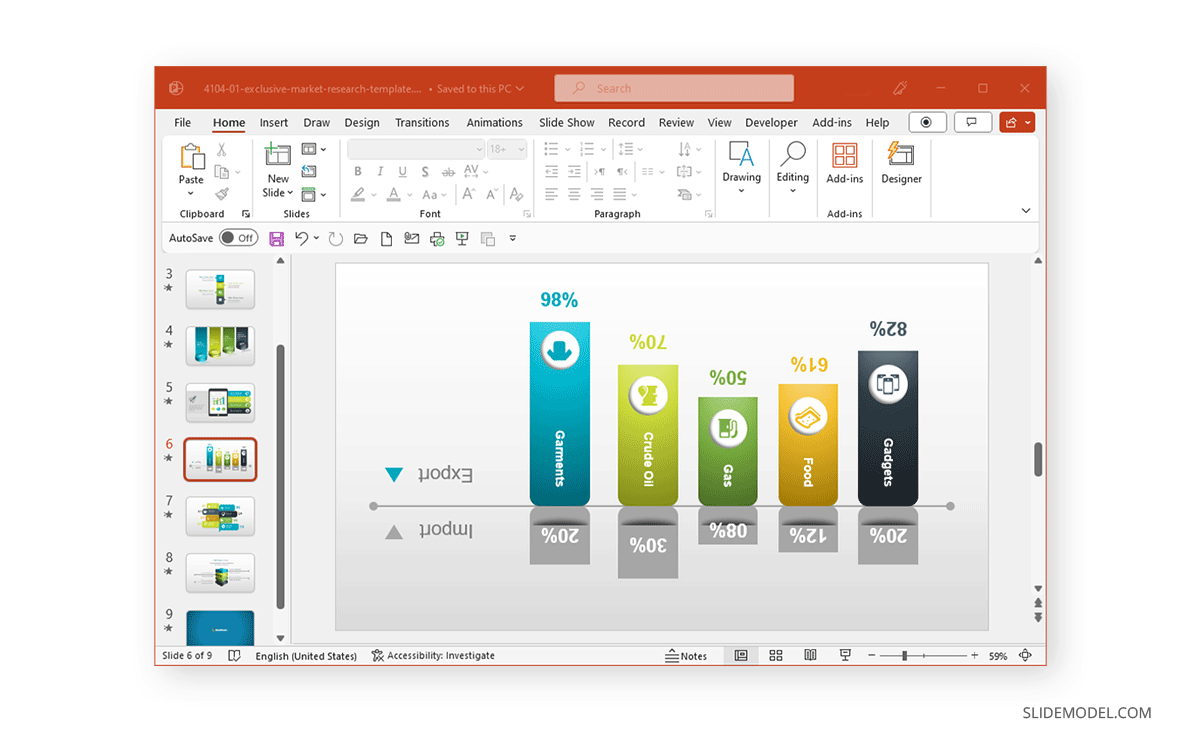
More Rotating Options
If you are not working in PowerPoint but Google Slides, you can follow a similar approach to rotate a slide in Google Slides. Rotating a slide in Google Slides is helpful, for example, when preparing marketing materials and graphics other than presentations. For example, by rotating the entire slide, you can make your presentation layout ready for designing abook report or an infographic in PowerPoint.
Final Words
You might need to rotate a slide object for aesthetic reasons and sometimes to correct an incorrectly rotated slide element. Either way, the above rotation options can help you rotate the whole slide or individual objects.

